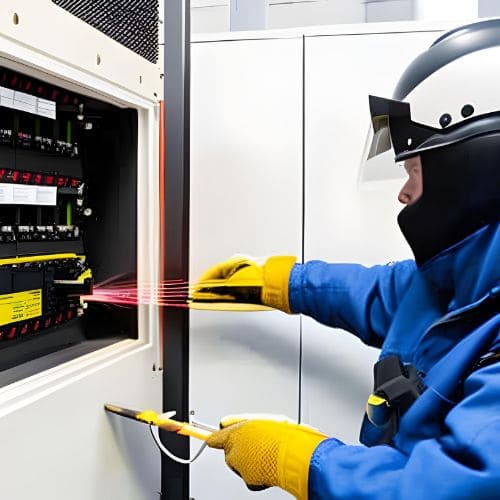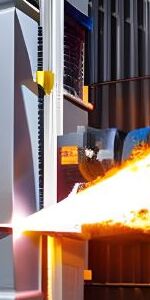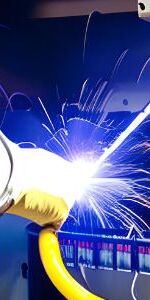The Significance of Arc Flash Hazard Analysis and Mitigation Techniques
Electrical arcs can develop when a gas is exposed to a voltage that is higher than what the gas can prevent. An arc occurs when the air between the conductors is sufficiently ionized by the voltage between them. Air becomes an excellent conductor of electricity when ions are added to it. Air is heated and illuminated by the current created by air ionization. The ionized air rises because of this heat, creating an arch-shaped stream. The phenomena is referred to as an arch current as a result. The temperature that an arc flash may reach is 20,000 degrees Celsius.
Risks from arc flashes put both persons and property in danger. Arc in flash has several benefits for companies, including:
- Medical attention, therapy, worker compensation, the cost of an investigation into the occurrence, and lost productivity are examples of direct expenditures.
- Legal and judgement fees, litigation expenses, penalties, insurance premiums, repair fees, and the cost of recruiting a replacement employee are examples of indirect costs.
- Unwanted incidents can damage your reputation, make it more difficult for you to get work, and even lead to criminal prosecution.
- Consumers tend to avoid companies with a lot of accidents, which results in lost revenue and the cancellation of an electrical license.
- Accidents involving electrical circuit use Flash makes a lasting impact, which can result in lost opportunities and money spent.
Table of Contents

Where Do Arc Flash Risks Come From?
- Using a test probe on an unsuitable surface
- Inappropriate tools, installations, and work practices
- Using substandard electrical components
- Equipment gaps or damage to the insulation
- Dispute over the disconnect panel
- Rust or dust on electrical equipment
- Inadequate switch and circuit breaker maintenance
- Vital organs exposed to the elements or frayed connections
- High-voltage wires or a constant power supply
- Electrical equipment that is damp

Techniques for Reducing the Likelihood of an Arc Flash:
Making electrical components inactive:
It reduces potential risks as much as is practical. Equipment that is electrified should not be worked on, and extreme caution should be used while testing it after it has been de-energized or re-energized. Circuit breakers that may threaten the worker operating them are kept from being too near to arc flash boundaries thanks to the usage of remote tracking.
Make use of technology that provide less risks:
To evaluate the dangers associated with short circuits and the interplay of protective devices, arc flash analysis and power system studies are performed. To safeguard people and property, choose low-threat alternatives such as remote rack equipment.
Electrical and control system replacement:
Based on the arc flash’s strength, confirm that the appropriate degree of PPE (personal protective equipment) is available. Engineering methods and equipment are changing to become safer. Energy distribution systems and circuit breakers are designed to limit the flow of energy.



Reduce the available fault current:
Industries will be able to lower the amount of accessible fault current by using non-current limiting breakers. These items can be used with an open tie while being maintained. By reducing the amount of fault current accessible during maintenance, the opening connection between the twin power supply lowers the possibility of an arc flash. Current-limiting reactors can be used to halt the flow of electricity during arc faults.
Change the blast's energy:
Encourage the use of materials resistant to arcing. Arc-resistant switchgear uses ducts to transfer the heat and energy produced by arc flashes to an empty space. Sealing joints, top vents for pressure relief, and stronger hinges are all used to achieve this.
CareLabs provides a wide range of arc flash investigation and analysis services. Arc flash hazards are looked at by experts to make sure your safety program is up to date. CareLabs uses innovative technology to locate arc flash hazards and reduce them. In medical laboratories, ETAP (Electrical Transient Analysis Program) software is used for research and analysis. To ensure that our professionals are available nearby in the event of an emergency or normal work, CareLabs employs crew members in many locations. CareLabs has quickly established itself as a reputable, ISO 9001:2008-accredited business with an extensive list of delighted customers. Arc flash testing and analysis are available from CareLabs in all of Korea’s main cities, including Seoul, Busan, Incheon, Daegu and Gwangju.
RELATED NEWS








Coordination


RELATED NEWS











